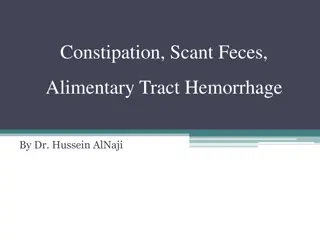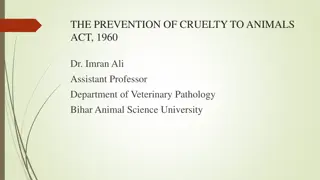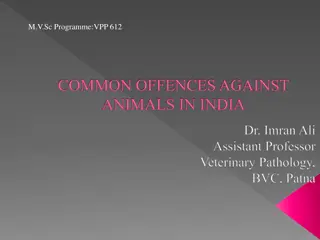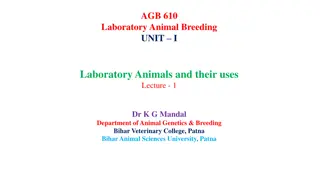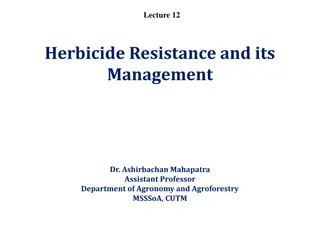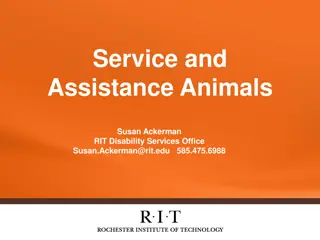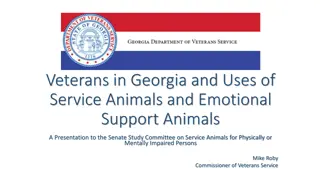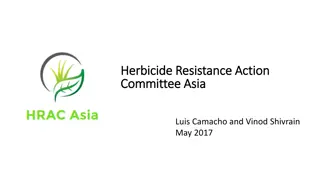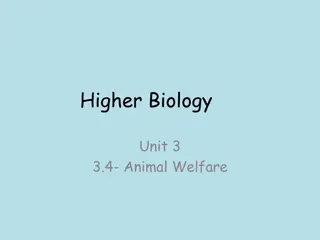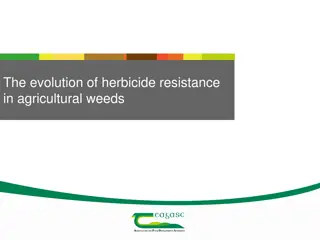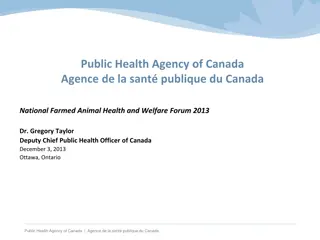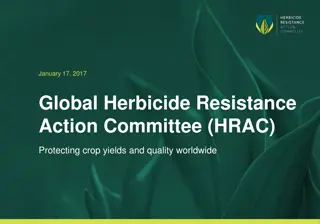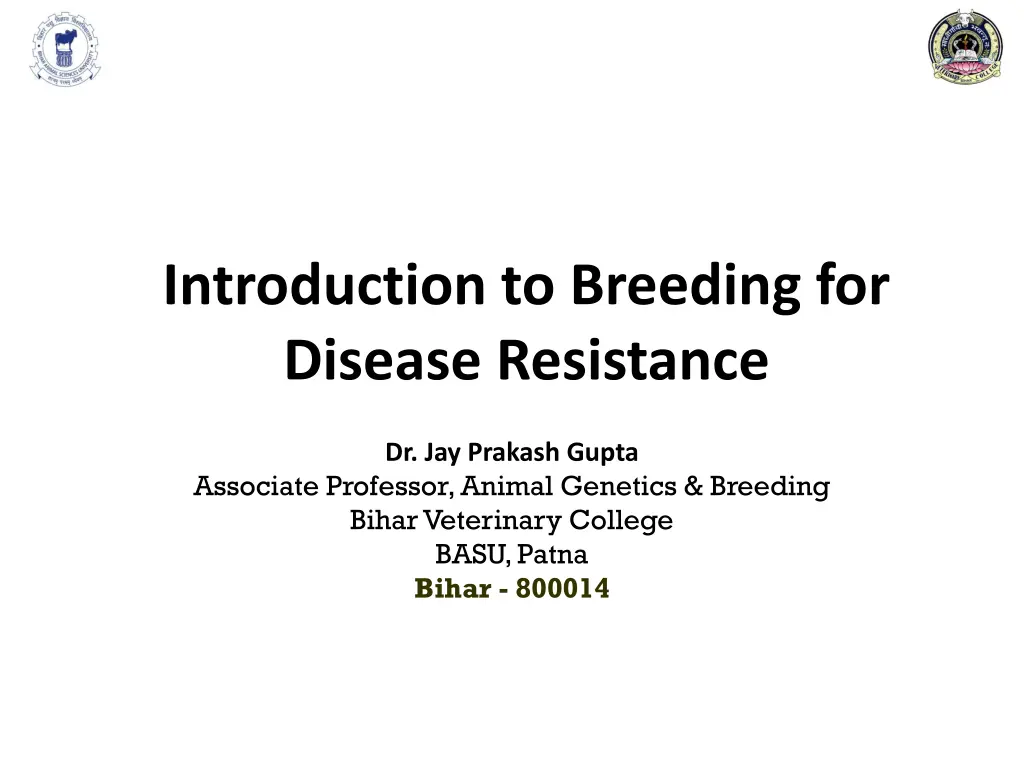
Understanding Breeding for Disease Resistance in Animals
Explore the importance of breeding for disease resistance in animals to improve health and reduce transmission, highlighting concepts like resistance, tolerance, and genetic architecture. Learn how selecting for resistance can benefit animal populations in disease management strategies.
Download Presentation

Please find below an Image/Link to download the presentation.
The content on the website is provided AS IS for your information and personal use only. It may not be sold, licensed, or shared on other websites without obtaining consent from the author. If you encounter any issues during the download, it is possible that the publisher has removed the file from their server.
You are allowed to download the files provided on this website for personal or commercial use, subject to the condition that they are used lawfully. All files are the property of their respective owners.
The content on the website is provided AS IS for your information and personal use only. It may not be sold, licensed, or shared on other websites without obtaining consent from the author.
E N D
Presentation Transcript
Introduction to Breeding for Disease Resistance Dr. Jay Prakash Gupta Associate Professor, Animal Genetics & Breeding Bihar Veterinary College BASU, Patna Bihar - 800014
Current situation Loss of production owing to mortality, growth rate etc. Increased Cost for treatment and culling rate Labour intensive animal management (culling, treatment etc.) No new class of antibiotic in over 40 years 2
Disease, Resistance and Tolerance Disease: Pathological condition, from infection, genetic defect and/or environmental stress Resistance: An ecological consideration of the interaction between the host and the pathogen species. Ability of the host to exert control over the pathogen life cycle up to certain degree 3
Contd.. Tolerance: Net impact on performance at a given level of infection, i.e. the regression of performance on pathogen load. Host having greater tolerance maintains high level of fitness Resilience: Ability to continue a normal production life for an animal which has been infected Where all animals are infected, resilience becomes a useful concept. 4
Why Selection/Breeding for Resistant? Breeding for resistance or tolerance? Enhance animal health but have potentially different effect on the prevalence of infection. Breeding for tolerance would not necessarily affect the pathogen. Breeding for resistance would reduce disease transmission possibly by imposing selection pressure upon the pathogen. Therefore, breeding animals tolerant to a disease would be disadvantageous when the aim is to reduce the transmission of infection. 5
Hereditary architecture of host resistance Host resistance to certain pathogen or disease mainly manifested through the variability in host immune responses to infection Therefore, there is possibility to improve genetic resistance to most diseases however, ascertaining resistance phenotypes under field conditions is still challenging 6
Contd.. Genetic resistance is permanent and cumulative resistance to a particular disease. Disease resistance multi-factorial (polygenic) No absolute resistance. Selection for genetic resistance - in conjunction with other disease control measures to reduce the size of challenges or to assist in treating existing infections / infestations. 7
Contd.. In cases where the gene(s) controlling expression of an affected phenotype has been identified, reduction in the frequency of affected animals can be done through selection to increase the frequency of the desirable phenotype in the population. In cases where genetic cause has not been identified, culling affected animals and their relatives may be effective, but the success depends on the disease incidence, and progress will become slower as the incidence falls. 8
Appropriate Selection Strategies Selective breeding (response) - heritability of the trait associated with disease resistance + variation among the animals. The direct selection - Individual or family selection in normal as well as in challenged environment is ideal selection strategy for detection of genetic variation. This is one of the simplest method, applied to various diseases likeMarek s disease, New Castel disease etc. However, this classical selection approach incurs high cost, large infrastructure as well as time. 9
Contd.. Finding resistance is tough and thereby alternate way is to look for the markers that are non- pathological, easy to detect and are associated with disease. Such markers are, Observables or Phenotypic markers Genetic markers Transgenesis direct markers for disease 10
Phenotypic markers Skin, hair, mucous membranes, secretions like tears, urine, ruminal content, secretions, etc. Variation between the hosts in such secretions may be associated with certain pathological conditions. Other such markers are faecal egg count of GI tract parasites, Tick count on body tick infection, somatic cell count of milk mastitis, Ig response in case of certain poultry diseases etc. saliva, mucous, skin 11
Genetic markers Sequencing of genomes have led to discovery of several genetic markers and even genes related to the immune system. Immune responsiveness would be an useful indicator of disease resistance in cattle. (Hernandez et al. 2003) Various genetic markers; microsatellites, SSCP, RFLPs, RAPDs, and AFLPs have been utilised to select animals for resistance against specific infectious diseases. The resistant animals are selected based on the marker allele linked to the trait. 12
Breeding for resistance to infectious diseases Disease resistance - detecting variance in the speed of epidemic development among groups - requires huge data and replicated epidemics for computation. Measuring of resistance phenotypes, is costly and difficult. Treatment with antibiotics is choice but carry the risk for emergence of resistant pathogens. 13
Contd.. Ideal experimental design for, detecting genetic variation in resistance and identifying associated SNP would be to exploit phenotypes measured on animals subjected to identical environmental and challenged conditions. The challenged conditions Deliberate So, require large-scale funding, coordinated efforts between several partners and hence are relatively uncommon. continuously varying Rare Standardised 14
Conclusion In short, Selection for disease resistance/tolerance require, Estimates of genetic parameters (require large amount of data and pedigree records). Recording disease incidence in the progeny (selecting parents having less incidence in their progenies) Analysis of available genetic variation to get the heritability estimates for a set of immune functions related traits essential for resistance to disease. 15
16 Thanks! Any questions? You can find me at: @JP_AAtrey jp.prakash01@gmail.com



